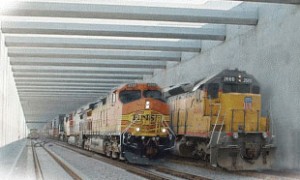
All posts by singlemalt
Vacancy Report
The vacancy rate stands at 2.1% while the availability rate is 5.4%. Both of these figures are slightly higher than a year ago. Los Angeles County is the largest industrial market in the nation, with over 1 billion square feet of industrial land, and the Central Los Angeles submarket maintains the lowest vacancy rate in the nation due to constant user demand for industrial warehousing space. Chicago #2, Dallas/Fort Worth #3, Philadelphia #4, Detroit #5. The five county area of Southern California maintained a three percent vacancy rate.
Investors and users have begun to exhibit cautionary behavior and thus the number of transactions have decreased.
California Food Processing Industry
Introduction California is the top agricultural state in the nation, a position it has held for 50 years. As a natural result, California is also the largest food processing employer in the United States. With an enormous variety of crops, great growing conditions and increasing demand for prepared food products, California is the center for food processing, shipping $50 billion worth of food products.
Definition Food processing is an umbrella term used to describe all the activities of manufacturing food and beverages for human consumption, as well as prepared feeds for animals. California processing includes fruits and vegetables, baked goods, meats, dairy products, sugar and confections, beverages, and fats and oils. The industry is defined as food and kindred products by Standard Industrial Classification (SIC) code 20.
Size and Location Food processing firms in California are as widely spread across the state as the farmlands that supply them. Food manufacturers purchase most of their perishable raw materials from area growers, ensuring the ultimate in freshness. California is the top producing state for many fruit and vegetable crops, providing the basis for myriad fresh, canned and frozen products. Correspondingly, preserved fruits and vegetables is the largest industry group in California food processing, providing a quarter of the state’s food processing jobs. Beverage manufacturing provides 19 percent of the food processing employment in California, led by the high value-added wine production. Bakery products in California provide 13 percent of the state’s employment in the manufacture of those products. California also has above-average representation in canned and cured seafood processing located in the coastal counties, and pasta production in Los Angeles, Orange and Alameda counties.
Economic Importance California produces a wide variety of food products and is the leading state in many food categories. California surpasses Wisconsin in milk production. California is the only producing state of such specialty foods as almonds, artichokes, raisins, prunes, olives, dates, figs and pistachios. California food processing employed 183,300 people in 1999, composing 11 percent of the nation’s total.
Top 150 Food Processors
The following Southern California companies made the Refrigerated & Frozen Foods magazine list of 150 top food processors: Overhill Farms, Inc.; Golden State Foods, Meat Products Group; Ready Pac Produce Inc.; SunOpta Fruit Group; and Frozsun Foods Inc.
Central Los Angeles Industrial Market Boundaries

